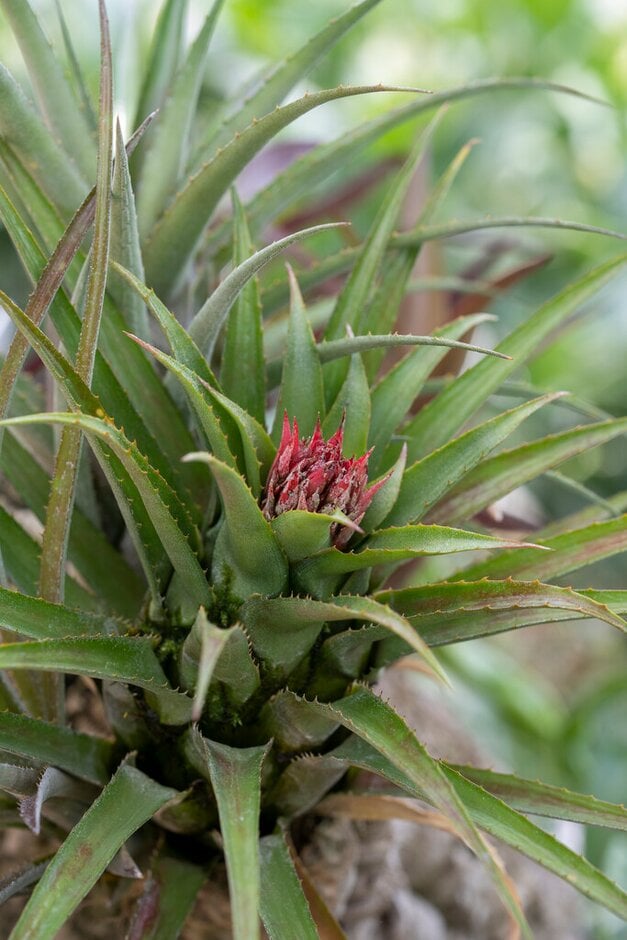Ananas comosus (F)
pineapple
A terrestrial bromeliad with dense rosettes of dark green, lance-shaped, evergreen leaves up to 1m long, with spiny margins. In summer it produces cone-like clusters of purple flowers, with reddish-yellow bracts, followed by bright red, edible pineapples up to 30cm long
Other common names
ananaspina
Size
Ultimate height
0.5–1 metresTime to ultimate height
2–5 yearsUltimate spread
0.5–1 metresGrowing conditions
Moisture
Well–drainedpH
AcidColour & scent
| Stem | Flower | Foliage | Fruit | |
| Spring | Green | |||
|---|---|---|---|---|
| Summer | Purple Yellow | Green | ||
| Autumn | Green | Red | ||
| Winter | Green |
Position
- Full sun
Aspect
South–facing or West–facing
Exposure
Sheltered Hardiness
H1ABotanical details
- Family
- Bromeliaceae
- Native to GB / Ireland
- No
- Foliage
- Evergreen
- Habit
- Bushy
- Genus
Ananas are evergreen, terrestrial bromeliads with basal rosettes of spiny-margined, lance-shaped leaves. In summer, they produce showy flowers in dense, terminal, cone-like clusters followed by fleshy, edible fruit
- Name status
Correct
- Plant range
- C & S America
How to grow
Cultivation
Grow in terrestrial bromeliad compost in full light, low to moderately humidity and no draughts. Water freely when growing and flowering, reduce slightly and add a balanced liquid feed weekly when in fruit, keep barely moist at other times. See bromeliad cultivation for further advice
Propagation
Root basal offsets in early summer, or sever the leafy rosette at the top of the fruit, allow it a day or two to callus then root it in a barely-moist mix of peat substitute and sand in indirect light at 21°C
Suggested planting locations and garden types
- Patio and container plants
Pruning
No pruning required
Pests
May be susceptible to scale insects
Diseases
Generally disease-free
Love gardening
Sign up to receive regular gardening tips, inspiration, offers and more
View our Privacy Policy
Get involved
The Royal Horticultural Society is the UK’s leading gardening charity. We aim to enrich everyone’s life through plants, and make the UK a greener and more beautiful place.
